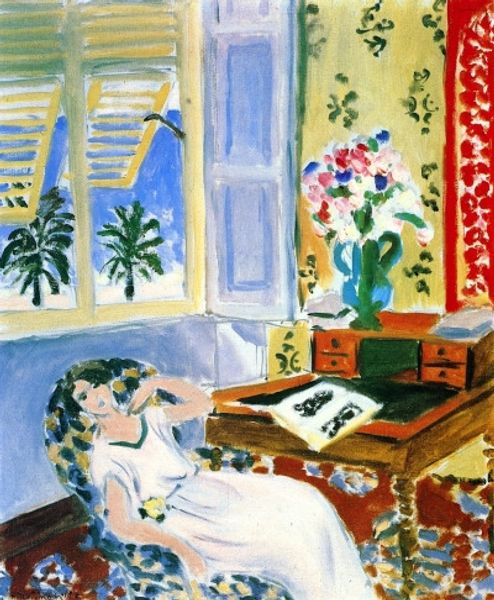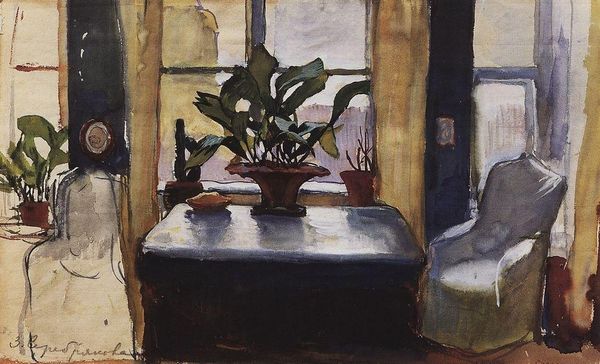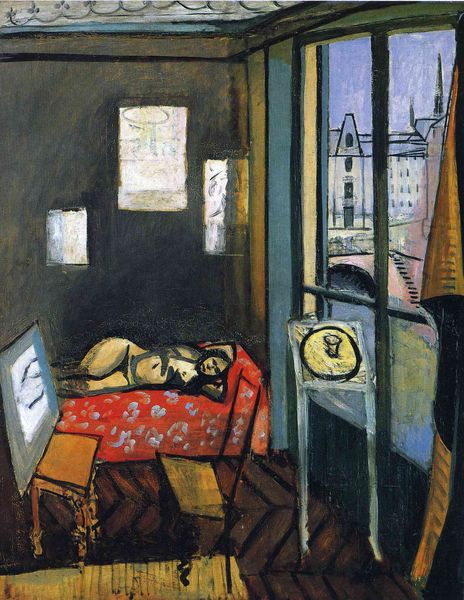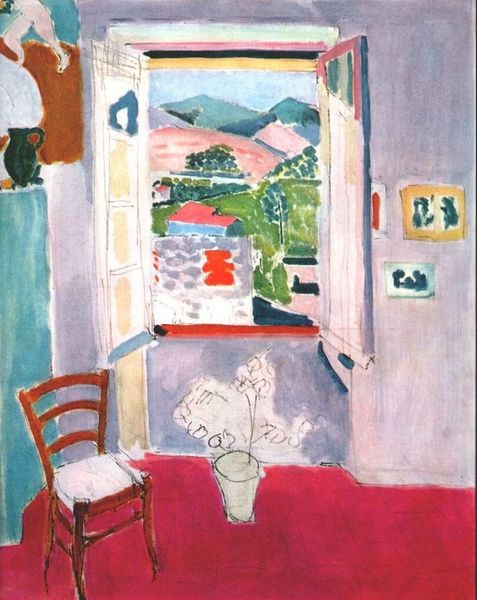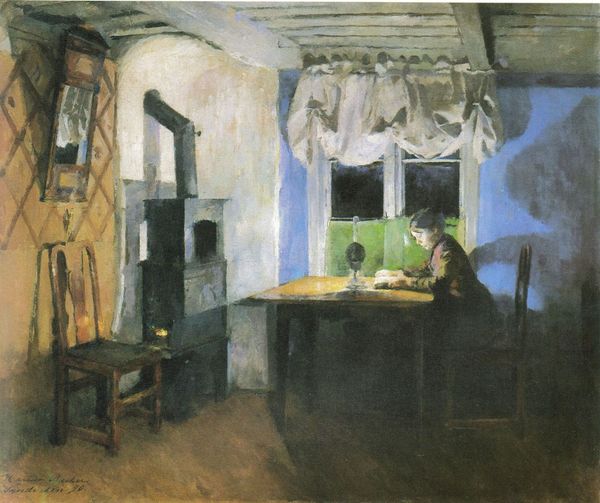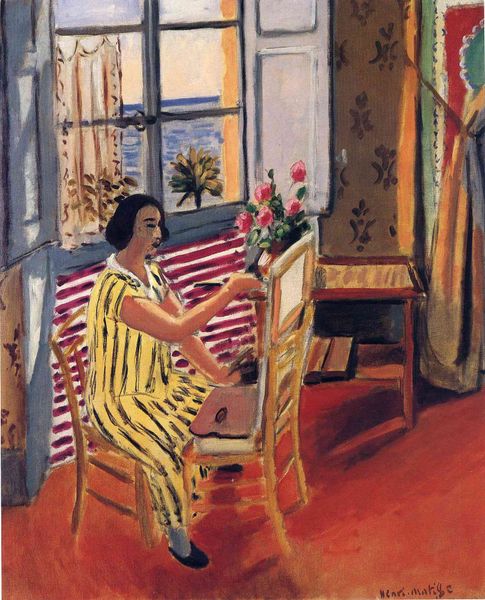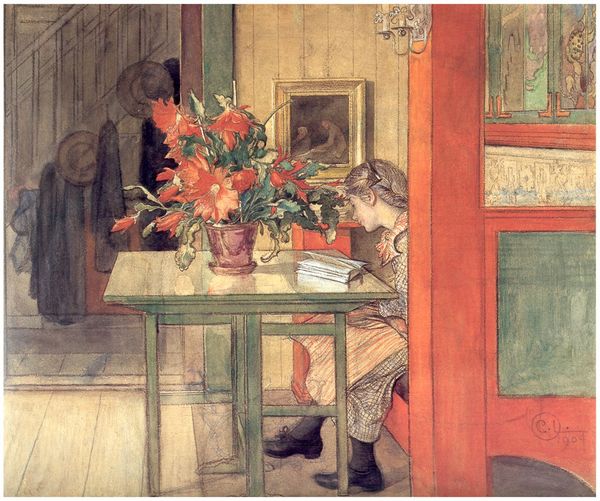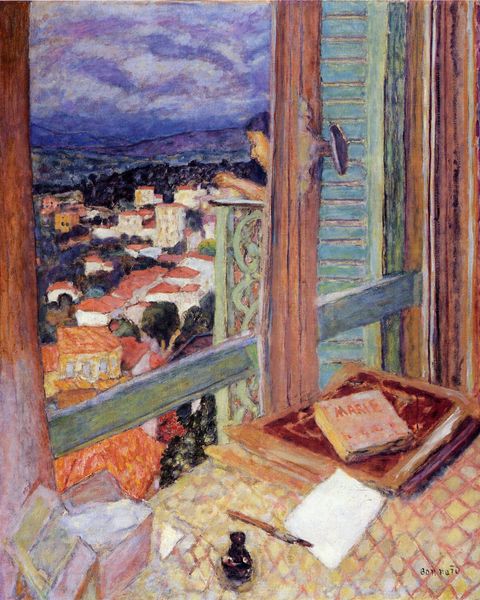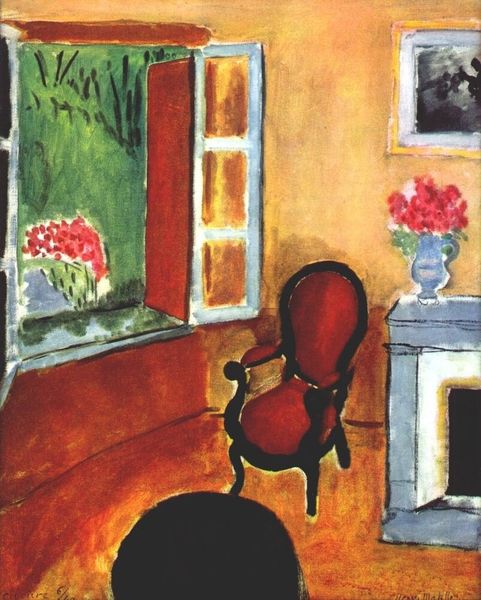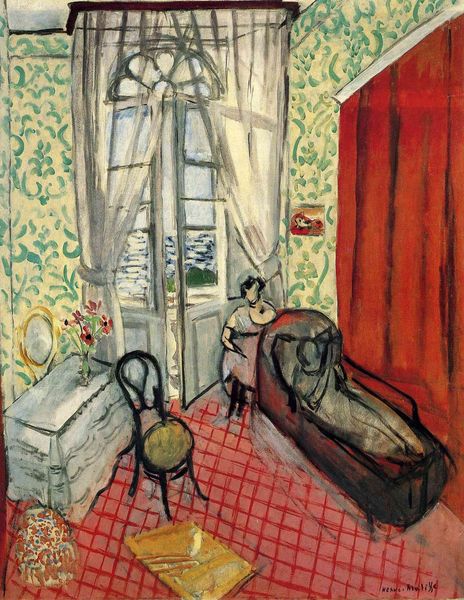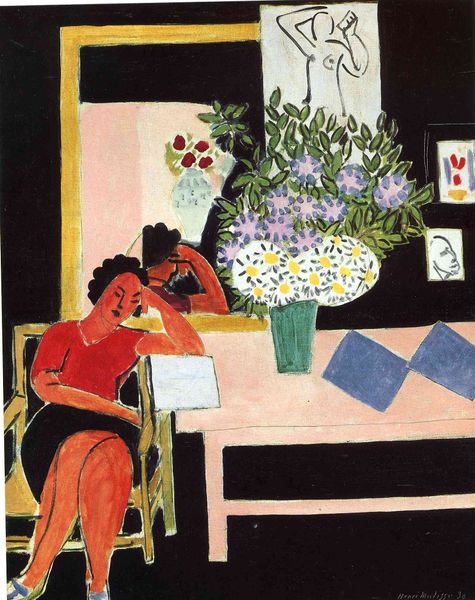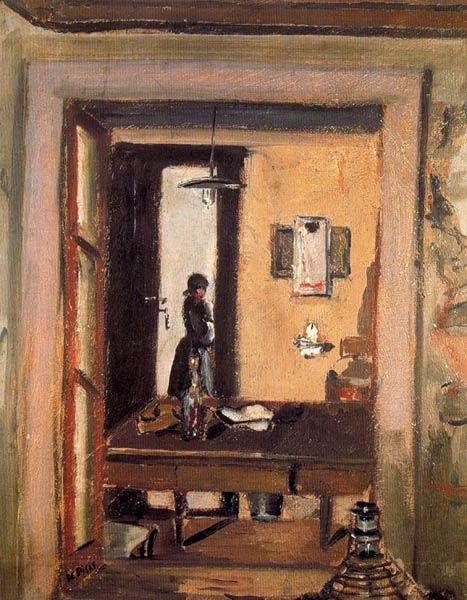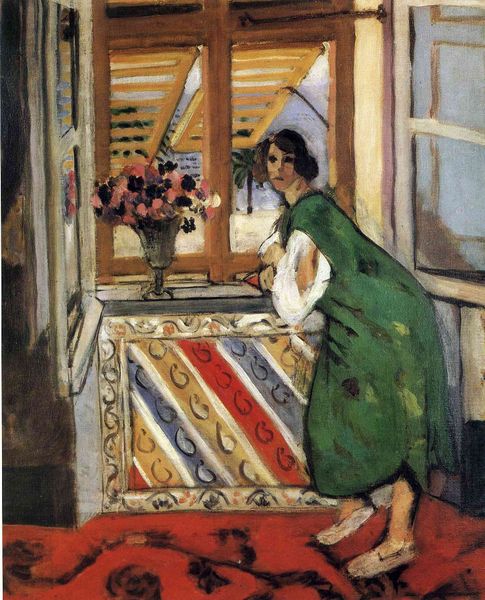
Copyright: Public domain US
Curator: I find this painting deeply introspective; it's titled *Reader Leaning Her Elbow on the Table*. Henri Matisse painted it in 1923 using oil paints. Editor: Yes, a very interior feeling indeed. The dense, almost claustrophobic space creates a palpable sense of quiet concentration. Notice how the striped wall on the left jangles with the patterned carpet—it is unsettling! Curator: Matisse was a master of pattern and how it could evoke emotion, not merely decorate. The reader is framed by a riot of design. Note the open window suggesting an escape from such patterns, but also acting as a stage, emphasizing the performative aspect of daily life. Do we find joy in reading? Or is it sometimes work? Editor: You're right, the spatial arrangement is striking, even a bit disorienting. See how he’s flattened the perspective. The planes feel compressed, pushing the viewer closer to the subject. It really does trap you in the space. And I can't unsee those window bars; they’re just abstract enough to bring the reading and writing, with a book at times perceived as escape, even further in confinement. Curator: There is tension present: comfort and imprisonment! Even the pose—the reader leaning on her elbow, seems to convey both thought and perhaps weariness, even boredom. One could even project upon this the way painting, with a model required for studio work, often has this mix of creation and production and ennui. Editor: Indeed! And there's the vase of flowers to the right. Perhaps symbols of spring and growth? In Fauvist paintings we have the sense of artists challenging conventions and emphasizing bold use of unnatural color as a sign of artistic expression, a shift from more traditional representation. I can't decide whether it feels joyous, or strangely melancholy. Curator: Yes, well put! This work, for me, exemplifies Matisse's ability to invest the everyday with symbolic weight, and ask probing questions of his own occupation, in creating that sense of artistic agency within confinement and doubt. Editor: Yes. I am struck at how such compositional structures impact emotion so keenly. The impact has been significant in shaping what became Modernism!
Comments
No comments
Be the first to comment and join the conversation on the ultimate creative platform.
